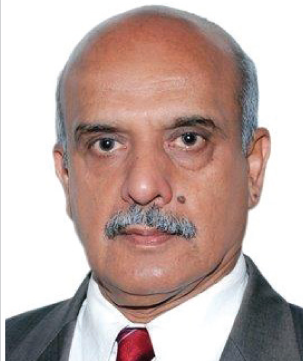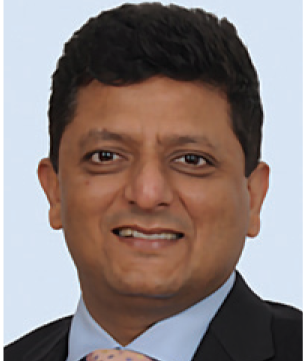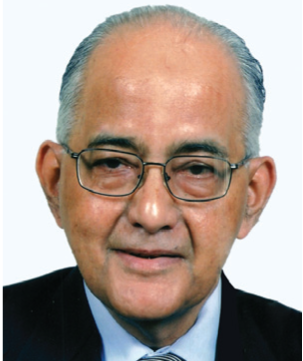One of the key takeaways from Union Budget 2021-22 was the government’s plan to address the issue of monopolisation of power distribution. For this, the government is proposing a paradigm shift in the distribution segment, with plans to “delicense” the business. Power Line invited industry stakeholders to share their views on the proposal, the likelihood of its being accepted by the states, and its implications for the sector….
What are your views on the government’s plans to delicense power distribution? Will the proposal find acceptability among state discoms? What should be the way forward for implementing the proposal, given the past privatisation experience?

Sanjay Kumar Banga
The proposed delicensing of the distribution segment is a groundbreaking event and can change the face of the sector completely. The discoms’ woes are well documented and several prior initiatives have failed to resolve the issue. At best, they have helped the discoms tide over the issue in the short term. The government came out with the first package, the Accelerated Power Development Programme, in 2001, while the last, the Ujwal Discom Assurance Yojana (UDAY) was launched in 2015. In the last decade, a fair amount of funding has been extended from the centre to state governments through various schemes. Every household is connected to the primary system. The various initiatives have helped AT&C losses come down to around 20 per cent pan-India, but the losses are still double those of the private discoms, which are at 8-11 per cent. And despite this AT&C loss reduction for state discoms, the real trouble lies underneath the surface – discom arrears to the gencos have grown to more than $16 billion.
Despite the potential benefits, discom privatisation has not gained much ground due to political unacceptability. While private players bring efficiency, their investments in improving system reliability and the higher opex in the initial period had, in the past, led to an increase in tariff. However, a closer look at the present scenario indicates that now is the best time to privatise utilities. Power purchase costs account for almost 75-80 per cent of the total consumer tariff. Most discoms have entered into long-term power purchase agreements that will expire over the next three to five years and be replaced with renewable power and purchases from the open market. Thanks to the changing generation profile in the country, power prices are expected to remain low, and the average portfolio cost of discoms is expected to come down in future. This provides scope for tariff reduction along with improved efficiency and service levels.
The government has now accelerated its push for privatisation, being mindful of the need of the hour. On May 16, 2020, Finance Minister Nirmala Sitharaman announced the privatisation of discoms in the union territories (UTs), stating that consumers should not be burdened with the cost of discoms’ inefficiencies. It was a welcome move. Tactically, it was astute of the government to start with the UTs over which it has greater administrative control. This will allow it to have a greater say in the privatisation process and, if successful, provide a template for discom privatisation elsewhere in India. In fact, this could provide a model for emulation by other utilities across the country, leading to better customer service and improved operational and financial efficiency. Following the announcement in May, the government issued the standard bidding documents on September 20, 2020. The budget then, to augur competitiveness for the benefit of the consumers, proposed the Electricity (Amendment) Bill 2021, with conditional segregation of content and carriage, thus providing consumers the option to choose their own suppliers and unleash real competition in the power sector.
At present, private utilities are serving a mere 10 per cent of consumers across licensees and franchisees, mostly limited to urban centres. While the concept of private utilities has worked in urban centres, the real challenge is to turn around rural centres. The real acumen and efficiency of a licensee can be tested if they perform in the more underdeveloped geographies of the country. Discoms should not end up working as monopolies. Efficiency should be incentivised, and competition should lead to consumers having access to power at a reasonable tariff. It would be interesting to see how new business models evolve, considering the current high commercial loss levels and the unreliable network, which does not guarantee 24×7 power supply. This model is currently working in European countries, wherein losses are limited to technical losses and the network is highly reliable, with enough redundancy in the system. Additionally, consumers have smart meters to facilitate quick switchover from one discom to another.
We foresee new entrants as discoms strive to acquire customers by clubbing together various other services to create value for consumers. Discoms will have backend systems combining water, gas, electricity, and even broadband and other entertainment and essential services, thus optimising costs and offering various services to fulfil varied customer needs. It will not be surprising to see companies that have more in-depth customer insight from other domains such as telecom and gas in this field. We expect the incoming discoms to offer innovative solutions and financing options for services such as rooftop solar, battery storage and demand response management, using time-of-day metering to attract new customers. These solutions will lead to reductions in customers’ monthly bills These acquisition strategies will also lead to the diversion of customers from incumbent distribution licenses.
It is essential to know that giving customers more choice is closely linked with building a world-class network. The perennial problem of the power sector, namely inefficient discoms, needs to be fixed before we plan for competition in this field, and the proposed bailout package should be used to address this malice in the first place. In light of the newly proposed Electricity (Amendment) Bill 2021, this is an opportune time for states to think innovatively and even go a step ahead to merge intra-state transmission with distribution networks in licensed areas, monetising them in order to invest in sectors such as healthcare and education, which deserve higher attention. The creation of competition via the proposed bill will force discoms to bring all new technologies and customer-centricity in order to optimise operations.
A distribution package worth Rs 3 trillion has recently been announced for discoms to improve their operational efficiencies. It is essential to use this package to incentivise state governments to privatise existing distribution licence businesses that have failed to bring down their AT&C losses, and improve customer service delivery. The essential requirement is to ensure reliability and continuity of supply through proper maintenance by having better governance and a management system in place. The proposed bailout package should now enable the state governments to take a bold step towards privatisation and ensure the neutralisation of any unwarranted upswing in tariff hikes for the first five years after privatisation, thus providing transition support to the private players. Any capital funding from the central government for this distribution package in any other form would be a waste of taxpayers’ money, with no substantial gain.

Anish De
The energy sector has gone through massive changes in the past decade, with a focus on decarbonisation, clean energy and technology induction. In the energy transition story, electricity has taken the centrestage. As a consequence, we now have enormous possibilities in terms of electricity-based business models and use cases across the value chain. In the clean energy story, distributed generation and mini-grids have important roles. However, the networks remain the centrepiece of this transformation story. Unfortunately, in India, the distribution networks, owned by state-run enterprises, remain bottlenecks. Even as the rest of the value chain has modernised, the discoms have struggled. From that angle, the provisions of the union budget with regard to distribution are an acknowledgement that this essential system is badly broken. At the core of this is a story of incentives and accountability. Discoms ought to be accountable to ratepayers, taxpayers and citizens at large, pretty much in that order. In practice, the order has been reversed. Even more, the political establishment has become a proxy for citizens at large. But it is a poor proxy, without due accountability.
Deregulation and competition, proposed in the Union Budget 2021-22, have the potential to bring back accountability where it belongs. It will require careful crafting, with lots of issues to resolve (and many of them may not yet have been thought through). But the broad intervention through the budget vis-a-vis deregulation and opening up the sector to competition and innovation is timely.
The measures proposed are sweeping. In the past, the country has struggled with privatisation and even carriage and content separation. The proposed framework will go well beyond that into globally unprecedented liberalisation and deregulation. It could well have been technically untenable in the past. But modern day technology can turn many of the past impossibilities into promising possibilities for the future. We must seek to leapfrog into the future, and if that requires cleaning the Augean stables, so be it. Without doubt, it will call for huge political courage, and to succeed it must be set on strong foundations. Hence, while the goals are clear and laudable, the design and the operating rules that would serve as the superstructure and the guardrails must be defined clearly, something that will take a lot of painstaking work. There are a very large number of issues around costs, contracts, distribution losses, quality of service, access responsibilities, investment approvals, distribution system operations, energy accounting, metering-billing-collection processes, etc. that will need to be addressed in a manner that is consistent with the goals in order to make the framework operationally feasible. Also, in the face of the climate emergencies that we face frequently, the distribution system needs to be made future-ready. The current situation in Texas, USA serves as a sobering reminder. As electricity networks reel for days at a stretch under the huge snowstorm in Texas, we come to realise how critical electricity has become in our lives, and that security of supply overrides other considerations because even one day of darkness is a day too many.
We do need to remember that India operates in a federal structure and electricity is on the concurrent list. While at one level all levers must be pushed to bring in efficiency and competition, it is equally important to strengthen the discoms and carry them (and the states) along in the journey, since these organisations are not going away. While they have to be divested of their monopoly rights and entitlements wherever feasible, they must also be strengthened simultaneously to deliver superior service as per the requirements of law and the times. They have to be made capable and responsible for the transformation, holding out both the carrot and the stick. To that extent, the parallel push towards consumer rights and accountability on the part of service providers is very important as an initiative. This is not new – the Electricity Act, 2003 provided for it, but it was never implemented. The new rules should provide the necessary push. The signals from the central government are clear and laudable; the purpose of competition and choice is unexceptionable. It is about time that the capability for earnest implementation is created, and the standards of governance and enforcement raised many notches. Consumers in India deserve nothing less.

Pramod Deo
In 2002-03, when there was an impasse between Reliance Energy (RInfra-D) and Tata Power on the issue of allowing the Tata Power Company (TPC) to distribute electricity in their common area of supply in the Mumbai suburbs, where both companies were claiming to be distributors, the matter went up from the Maharashtra Electricity Regulatory Commission (MERC) to the Supreme Court via the Appellate Tribunal for Electricity. The Supreme Court decided that the TPC’s licence did entitle them to supply power to consumers in the suburbs. However, as the Electricity Act, 2003 had a provision for consumers to switch over, any utility that lost its customers would have to be suitably compensated. Hence, there were provisions for a cross-subsidy surcharge as well as an additional subsidy surcharge that came with a network being “stranded”. If you had built a network for, say, 1,000 consumers, and you found suddenly that 500 consumers had left, you would be left with an extra network built at a fixed cost that could not be recovered because those consumers had already migrated. Thus, an additional cross-subsidy surcharge could be imposed.
Initially, when such consumer migration to TPC was allowed after the Supreme Court order, no effort was made to address these issues. After 21 months, nearly 150,000 large consumers in that area migrated to Tata Power. This had the effect of increasing the tariffs of the consumers remaining with RInfra-D. The numbers of migrants kept increasing and went up to 570,000. What made the financial situation of Reliance worse was when Mumbai airport, a high-paying consumer, migrated but all the surrounding slums, which had a large number of low-paying consumers, remained with Reliance. Amidst allegations of cherry-picking of consumers by TPC and in an attempt to balance the consumer mix, given that only large consumers were migrating, the commission belatedly introduced a cross-subsidy surcharge and a regulatory asset charge and modified tariffs of both the licensees such that changeover became uneconomical for large consumers but lucrative for small consumers. The ground reality is that once they had a choice, nearly 19 per cent of Mumbai’s suburban consumers migrated to a more economic supplier.
Coming to the island city of Mumbai, there is a protection provided under the existing law to municipalities like Brihanmumbai Electricity Supply and Transport (BEST). Consumers of BEST are denied “open access” because they cannot switch over to Tata Power for supply. The proposed amendment does not address this restriction. Thus, no new entrant will be allowed to supply the electricity in the New Delhi Municipal Corporation (NDMC) area in Delhi. To cut a long story short, these are all unresolved issues and parallel licensing is not a smooth ride.
Coming to the more serious issue of cross-subsidy, what will happen when the paying consumers migrate to new parallel licensees? Maharashtra has only one discom, Maharashtra State Electricity Distribution Company Limited (MSEDCL), which supplies power to the entire state except for the capital city Mumbai. There, just less than 100,000 customers who consume more than 1 MW of power contribute nearly 40 per cent to MSEDCL’s revenues. That means that the average cost of supply is Rs 7.31 per unit, but the average billing for this class of users is Rs 8.62 per unit. Then, we are then left with 27.2 million consumers, of whom agricultural consumers constitute about 4.2 million. The average tariff for farmers fixed by the regulatory commission (MERC) is Rs 3.71 per unit. As the state government gives an upfront subsidy to MSEDCL of Rs 50,000 million, agriculturists need to pay only Rs 1.50 per unit. If this payment was realised, the agricultural sector would be contributing around 14 per cent. But the money to be paid by farmers is not realised for the last three to four years due to agriculturists’ problems such as droughts and excessive rains. This money, of the order of Rs 100,000 million plus, being not available, the financial situation of MSEDCL is very precarious.
If we take out the industrial, commercial and agriculture consumers, we are left with 22.9 million residential consumers. However, they are paying slightly more than the average cost of supply. There is no cross-subsidy to this category of consumers. There is some cross-subsidy to small households from the higher-end consumers in this category.
Hence, the issue we face is political. In this kind of politically driven cross-subsidy structure, how do you convince the state governments of the advantages of the proposed dispensation of parallel private suppliers? Most discoms are owned by the state governments and, for all practical purposes, they are nothing but extensions of the state government. So why would they accept such a new dispensation? The Electricity Act, 2003 was to develop a national power market through delicensing of generation and “open access” to industrial and commercial users. Will delicensing of the distribution business do it now?

Ajay Mahajan
Post the enactment of the Electricity Act, 2003, while the power generation and transmission segments have made rapid strides, with healthy participation from the private sector, the power distribution segment continues to lag. This segment is among the few natural monopolies in the power sector value chain. Today, the sector is plagued by high line losses, huge under-recovery of cost and myriad other issues, leading to precarious financial situations for most of the discoms. This difficult fiscal situation has severely impaired discoms’ ability to invest in upgradation of the network infrastructure. This inadequacy has led to higher AT&C losses and poor quality of services. It has been almost two decades since the introduction of the Electricity Act, 2003. However, consumers, instead of getting reliable and competitive power supply, are perforce expected to settle with substandard services. In this context, the finance minister’s announcement in the union budget is a welcome move. While such competition is already there or is at a nascent stage in other infrastructure segments such as telecom and city gas distribution, it is still absent in the power distribution sector, except for the licence area of Mumbai.
Delicensing or separation of carriage and content in “electricity” terms means that the carriage or distribution function will be distinguished from the supply function. While the distribution function in such an arrangement will be vested with one entity, the provision for multiple supply licensees is expected to bring competition and improve standards of performance. The separation of carriage and content has been a contentious issue. Given the politically sensitive nature of power distribution reforms, including delicensing, most of the states have been reluctant to embrace it. The proposal for separation of wires and supply businesses was part of the Electricity Amendment Bill, 2014, but it could not succeed given the stiff opposition from both state and employee unions. The proposal was again put up with some amendments in 2018, but met with the same fate. Given the experience, wherein this proposal has not found favour with states or unions, it is unlikely to be smooth sailing this time around as well.
Post the privatisation of the Delhi Vidyut Board (DVB) in 2002-03, not many states have shown interest in privatisation-related proposals, the only exception being the privatisation of the Central Electricity Supply Utility of Odisha. A few states are experimenting with the idea of distribution franchising and have seen some awards over the past few years. However, the overall interest in such reforms has been feeble. To encourage states to take up privatisation, the central government has proposed the privatisation of distribution licensees in eight UTs. Hopefully, with improvement in operational efficiency and better customer service in these eight UTs, the larger states will have confidence to undertake reforms.
Further, the employees, who fear loss of their jobs or a change in their service conditions, are important stakeholders. It would thus be important to allay their concerns and take them along for privatisation to be successful. The Delhi power reforms owed much of their success to a tripartite agreement between the Delhi government, the erstwhile DVB and DVB’s union, which called for no retrenchment or change in service conditions, among other demands, as part of the privatisation package.

Sabyasachi Majumdar
The distribution segment remains the weakest link in the power sector value chain owing to long-standing issues such as weak operating efficiencies, inadequate tariffs and subsidy in relation to cost of supply, delays in receiving subsidy and delays in pass-through of cost variations to consumers in the form of higher tariffs. Over the past two decades, the government has launched four support packages to revive the distribution segment, without a commensurate improvement in discom finances. The latest has been a liquidity relief scheme announced in May 2020 and prior to that UDAY, which was launched in November 2015.
In contrast to the weak performance of most state-owned discoms, the performance of several distribution utilities owned by private corporates has remained healthy over the years. Distribution losses in the licence area operations of discoms such as Tata Power Delhi Distribution Limited (Delhi), Torrent Power Limited (Ahmedabad, Gandhinagar and Surat) and CESC Limited (Kolkata and Howarh) have remained less than 10 per cent against the all-India AT&C loss level of more than 20 per cent. These utilities have been able to lower their distribution losses over the years, supported by improved metering, billing and collection along with distribution infrastructure upgradation. However, one must note that these utilities primarily operate in urban areas and benefit from a favourable customer profile.
Given the less than satisfactory progress shown by most state-owned discoms in improving their operational and financial performance, the central government has proposed the privatisation of discoms as a measure to revive the segment. It announced the privatisation of UT discoms in May 2020. Thereafter, tenders were issued for the privatisation of discoms in the UTs of Daman & Diu, Dadra & Nagar Haveli, and Chandigarh. Further, the Ministry of Power has recently notified the draft bidding guidelines for the privatisation of distribution licensees. However, there is a resistance to privatisation from some states and employee unions, as seen from the protests and the filing of a petition by the employee union of Chandigarh UT. Therefore, the government is now proposing to delicense the distribution segment by allowing multiple operators in a distribution area and thereby move towards a market-based approach. This was announced in Union Budget 2021-22 and also highlighted by the power minister. The existing state-owned discoms would continue to operate under this structure and in parallel to the other private power suppliers.
The implementation of the delicensing initiative would require amendments to the Electricity Act as well as suitable policy and regulatory measures to outline the division of the wires and supply business, including a mechanism to compensate the existing discoms for the distribution infrastructure as well as a tariff determination process in the case of multiple operators. Also, the regulations must provide a mechanism for a fair and equitable sharing of AT&C losses, subsidy payments, cross-subsidy charges and additional surcharge. While delicensing would be a positive for consumers in the long run, by providing them a choice of suppliers and improved operating efficiencies and customer service, the implementation of this initiative would require the support of the state governments.

Professor S.L. Rao
Power distribution is, in some cases, delicensed to the private sector. The licensee has to order and receive the electricity and send it to different customers, for whom it would need to have the electricity posts and further equipment ready in order to move the power to the licensee and charge for it. What is now being proposed is further decentralisation, so that a power distribution licensee might have only one small part of its present territory, and will require arrangements for transmission and billing from thereon. It does not seem possible for any single locality to have more than one licensee.
What is the advantage of such further delicensing? The distributor will not be able to negotiate with the generating company for better rates. However, the distributor’s services to customers can remain of high quality, depending on the systems and organisations. It does not appear to bring any fresh advantage, whether in terms of supply quality, price or discipline, compared to the current condition of the distributors, who today have a more consolidated and larger territory. In my view, there is a limit to the extent of delicensing of distribution territories. There can certainly be more territories, but there is a limit to that delicensing. The advantage of a smaller distribution territory is that the quality of the service can be better, because the distributor is dealing with fewer customers.
